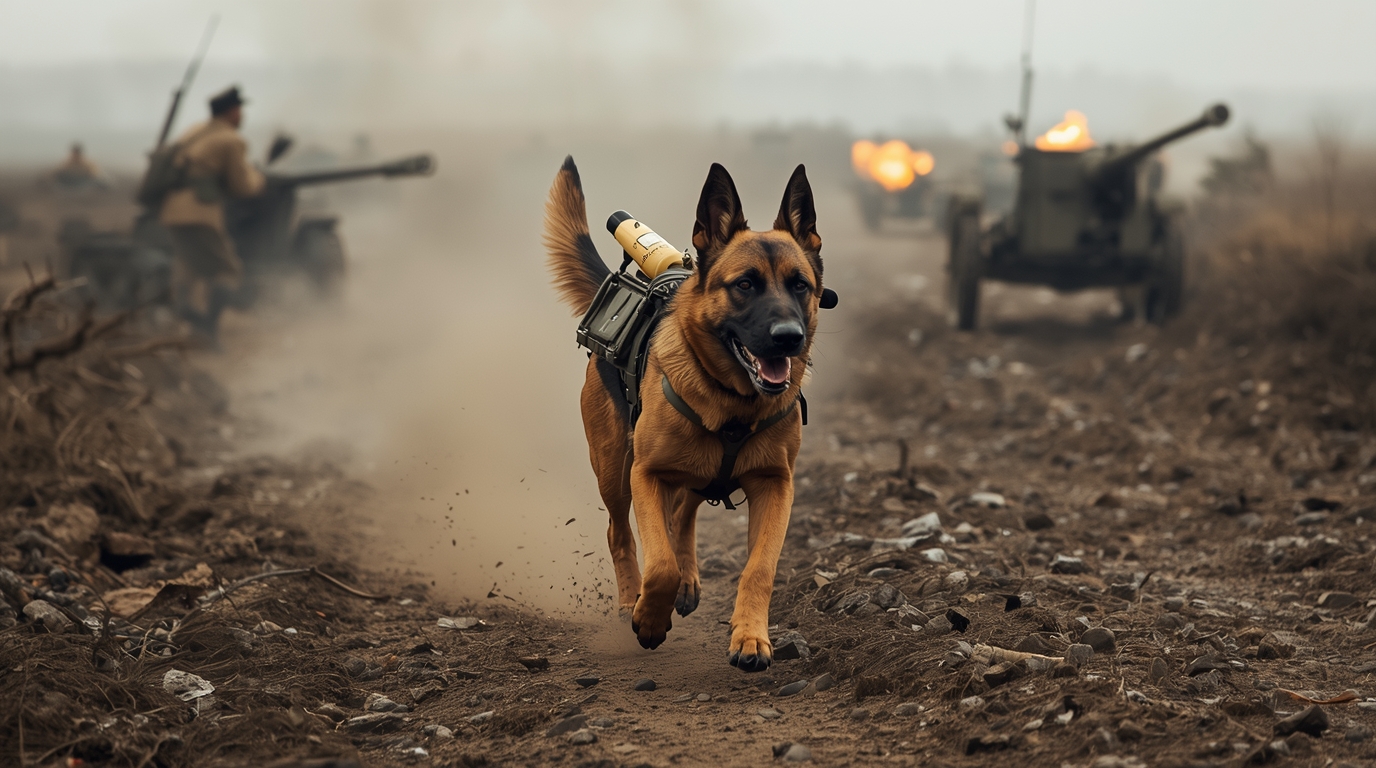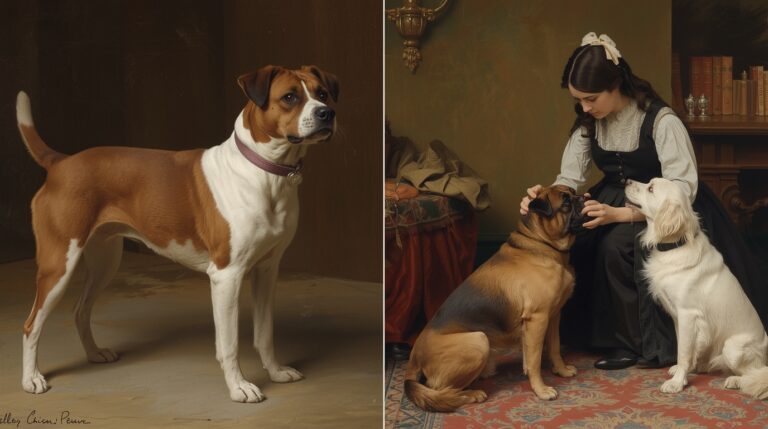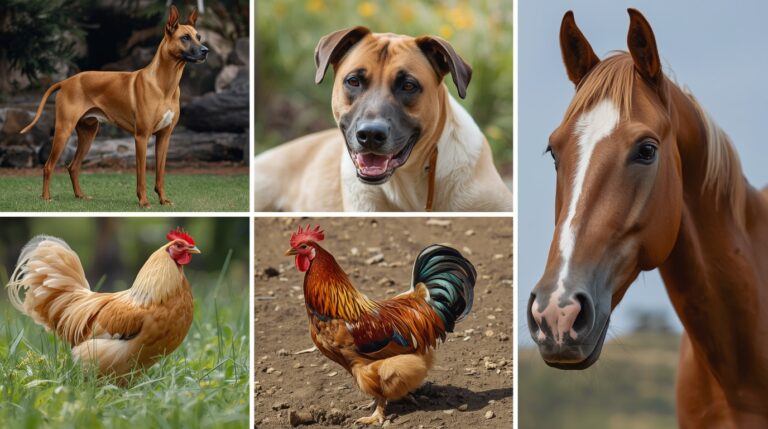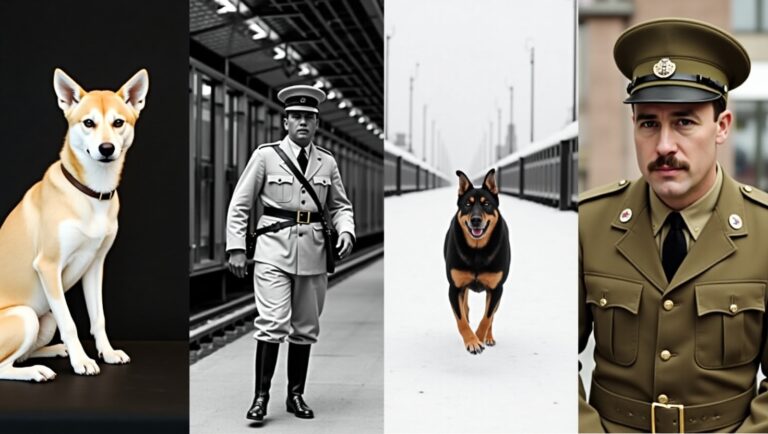Dogs in World War I: Messengers, Medics, and Morale Builders

Introduction
During World War I, the battlefield was not only home to soldiers and machinery but also to an army of silent yet courageous four-legged companions—dogs. These animals served in various capacities ranging from messengers and medics to morale boosters. In the trenches and fields of Europe, dogs demonstrated exceptional intelligence, loyalty, and bravery, often performing roles that technology of the time could not.
This article explores the semantic roles of dogs in WWI, analyzing their historical function through the lenses of military utility, psychological influence, and cultural symbolism. We highlight specific breeds, roles, training processes, and historical examples that solidify the legacy of war dogs in the Great War.
Historical Background of Dogs in Warfare
Before World War I, dogs were already a part of human conflict. From the Roman Empire’s Molossian hounds to the Napoleonic wars, dogs had served as guards, sentinels, and scouts. However, it was during WWI (1914–1918) that their use became more systematized, especially in European armies.
Countries like Germany, France, Belgium, and later the United Kingdom and the United States, integrated dogs into their military structures. They were no longer just companions but were officially enlisted, trained, and deployed in the war effort.
also read this Dogs in Warfare and Service
Canine Breeds Commonly Used in WWI
Not all dogs were suited for battlefield tasks. Certain breeds stood out for their intelligence, agility, trainability, and temperament.
German Shepherd
Originally bred for herding, the German Shepherd became the preferred choice for messenger dogs and scout duties due to their strength and intelligence.
Doberman Pinscher
The Doberman was known for its speed and alertness, making it an excellent guard dog and messenger.
Airedale Terrier
With a high pain threshold and strong sense of direction, the Airedale Terrier served in communication and rescue operations.
Belgian Malinois
These dogs were often used in the Belgian Army for ambulance work, pulling small carts with supplies or injured soldiers.
Mixed Breeds
Many dogs were strays or rescues adopted by soldiers. Though untrained initially, they quickly adapted to trench life, becoming mascots or ad hoc messengers.
Role of Dogs as Messengers
In the chaotic trenches, communication lines were frequently cut. Wireless technology was still in its infancy, and human runners were exposed to sniper fire or artillery barrages. This made messenger dogs invaluable.
Messenger Dogs: How They Worked
Dogs were trained to memorize multiple routes, traveling back and forth between command posts and front-line positions. They were equipped with collars or harnesses that held messages in waterproof capsules.
They could navigate under fire, through rubble, and across no man’s land, a feat often impossible for humans.
Historical Example: Satan the Messenger Dog
One of the most famous cases is Satan, a French war dog who ran across a bombardment zone to deliver a message that saved an entire unit from encirclement. Despite being injured, he completed his mission.
Training Process
Training for messenger dogs lasted several weeks and involved:
- Voice commands and route memorization
- Desensitization to explosions and gunfire
- Pairing with specific handlers to build loyalty
Dogs as Medical Assistants and Casualty Locators
Dogs were not just messengers; they also played a key role in battlefield medicine.
Red Cross Dogs
Also known as Mercy Dogs or Sanitätshunde, these animals carried medical supplies such as bandages, morphine, and canteens to wounded soldiers.
They were trained to:
- Locate injured soldiers in trenches or no man’s land
- Bark or return with a scrap of clothing to signal a find
- Guide medics to unconscious or immobilized individuals
How They Saved Lives
A single Red Cross dog could locate 15–20 wounded soldiers per day in large-scale offensives like Verdun or Passchendaele. These dogs often worked independently, making life-and-death decisions.
Example: Prusco the Medic Dog
Prusco, a Belgian Red Cross dog, reportedly saved over 100 lives during the course of the war. He would carry water and mark the locations of the severely injured for medics.
Psychological Impact and Morale Boosters
Amid the horrors of trench warfare, dogs became symbols of hope and humanity.
Trench Companions
Dogs provided emotional support to soldiers, reducing symptoms of:
- Shell shock (now PTSD)
- Anxiety and depression
- Loneliness and isolation
Soldiers often wrote about their dogs in letters home, sometimes referring to them as “their only friend on the front.”
Mascots and Unit Symbols
Many regiments adopted dogs as mascots, who wore miniature uniforms or insignias. They accompanied their units through rotations, becoming part of group identity and esprit de corps.
Funeral and Memorial Participation
Some dogs refused to leave the sides of fallen handlers, staying by their bodies for days. Their loyalty and devotion became legendary, often leading to battlefield funerals or military honors.
Dogs and Gas Warfare
World War I introduced chemical warfare, and dogs played a role here too.
Early Gas Detectors
Dogs’ heightened senses made them early chemical detectors, alerting troops to the presence of chlorine or mustard gas before human detection. Some were trained to bark or retreat when they sensed gas.
Limitations and Challenges
- Dogs could also be affected or killed by gas
- Their masks were rudimentary and often ineffective
- Training was inconsistent across nations
Dogs in Logistics and Communication
Aside from messengers and medics, dogs contributed to supply logistics and field communication.
Sled Dogs and Draft Work
In snow-bound areas or muddy terrain, smaller breeds and even large ones like the Mastiff pulled light carts with ammunition, rations, or water.
Communication Line Runners
In some cases, dogs were used to lay telegraph lines by running across areas with a lightweight spool that unwound as they moved.
Dogs in Propaganda and National Identity
The image of the loyal war dog became a powerful tool for propaganda.
Posters and Public Appeals
Posters featured dogs with headlines like:
- “Even the Dogs Fight for Freedom”
- “Adopt a War Dog—Save a Soldier”
These images encouraged recruitment, donations, and war bond purchases.
Canine Heroes in Media
Stories of dogs like Rags, Satan, and Prusco were published in newspapers, helping the public connect emotionally to the war front.
Notable War Dogs of WWI
Rags (United States)
A mixed-breed terrier found in Paris, Rags served with the U.S. 1st Infantry Division. He delivered messages, alerted troops of incoming shells, and survived gas attacks. He received multiple medals and was buried with military honors.
Stubby (United States)
Although more famous in WWII lore, Sergeant Stubby actually served in the final year of WWI. He warned of gas attacks, found wounded men, and even caught a German spy.
Satan (France)
We’ve already discussed Satan, but it’s worth noting that his heroic run saved 150+ soldiers and earned him France’s Croix de Guerre.
Differences in Dog Use by Country
Germany
- Developed extensive dog training programs
- Had over 30,000 dogs in military service
- Specialized in messenger and ambulance roles
France
- Focused on Red Cross dogs
- Used dogs for trench companionship and search
United Kingdom
- Initially lagged but later integrated messenger and sentry dogs
United States
- Entered the war in 1917 and had limited canine infrastructure
- Relied heavily on adopted strays and allied-trained dogs
End of War and Post-War Legacy
After the war, many dogs were either:
- Adopted by their units
- Given to war hospitals for veterans
- Honored with memorials, such as the Animals in War Memorial in London
The legacy of WWI dogs continued into WWII and influenced the formation of military K9 units across the world.
Training and Deployment Techniques
Military dogs underwent rigorous training, including:
- Voice command recognition
- Obstacle navigation
- Desensitization to gunfire, explosions, and blood
- Loyalty training with designated handlers
Deployment was often via trench trenches, carts, or even air-drops in special harnesses in some cases.
Cultural Significance and Public Perception
Dogs became symbols of:
- Loyalty in the face of chaos
- Non-human sacrifice
- Unity between man and beast
Their representation in books, films, and monuments has continued for over a century.
War Honors and Recognition
Some dogs received official military honors, including:
- Croix de Guerre (France)
- Iron Cross (Germany)
- Medals of bravery from the United States
Others were buried with full military honors, and their names are etched into canine war memorials around the world.
Comparison with Modern War Dogs
Today’s military dogs are:
- More systematically bred and trained
- Used primarily for bomb detection, tracking, and patrol
- Equipped with high-tech gear like cameras and GPS
Still, the WWI dogs paved the way, proving their battlefield worth under the most brutal conditions in human history.
Dogs in Literature and Art from WWI
Wartime literature and art frequently depicted dogs:
- In postcards, comforting wounded soldiers
- In poems, symbolizing lost innocence
- In paintings, shown running through smoky battlefields
These works helped frame the dog as a heroic yet tragic figure, a reflection of the war itself.
The Ethical Debate of Using Animals in War
While the contribution of dogs is undeniable, questions persist:
- Was it ethical to subject animals to war?
- Could alternative technologies have replaced them?
These debates continue in animal rights communities and military ethics circles today.
Conclusion
The story of dogs in World War I is one of courage, loyalty, and unsung heroism. From delivering life-saving messages and rescuing the wounded to lifting morale, dogs played multifaceted roles that shaped the human experience of war.
They were not just animals—they were comrades. Their legacy lives on in the military K9 units of today and in the hearts of those who remember the forgotten heroes of the Great War.




